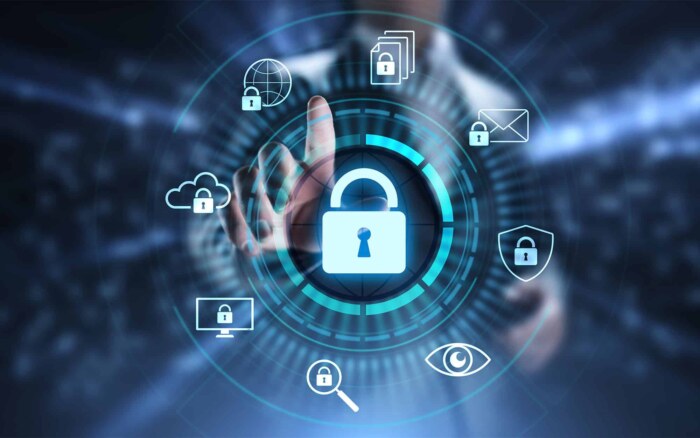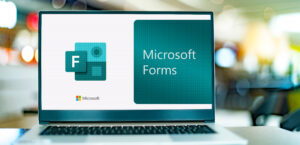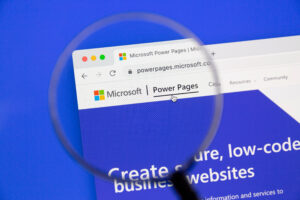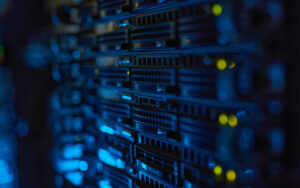Cybersecurity Challenges in IT Modernization
IT modernization is like revolutionizing your efficiency, but it also brings a wave of emerging security threats that can’t be ignored. As businesses embrace cloud services, Digital Transformation, and the latest hardware, they must prioritize cybersecurity to protect sensitive data. Organizations can upgrade their systems while minimizing vulnerabilities by understanding the main risks and adopting proactive strategies.
The Importance of IT Modernization
IT modernization isn’t just about upgrading servers or transitioning to the latest software—it’s also critical for maintaining a secure and future-ready business environment. Aging systems and infrastructure often expose companies to heightened cybersecurity risks, including outdated security patches and misconfigurations that attackers can exploit. By contrast, modernized environments typically come bundled with enhanced security tools, zero-trust frameworks, and more robust encryption options. A well-planned IT modernization strategy supported by regular audits and ongoing monitoring ensures businesses can innovate without compromising their data’s integrity.
Common Cybersecurity Risks in IT Modernization
Upgrading or overhauling your IT environment involves integrating new technologies, reconfiguring network architectures, and migrating sensitive data. While these initiatives promise increased efficiency and competitiveness, they also open the door to new cybersecurity hazards. Understanding these dangers is the first step toward crafting a robust defense strategy.
Data Breaches
A data breach is one of the most frequent and devastating risks during IT modernization. Moving data between environments—whether on-premises to cloud, cloud to cloud, or even upgrading within the same platform—creates opportunities for attackers to intercept sensitive information. Hackers may exploit improperly configured firewalls, unencrypted data transfers, or overlooked vulnerability patches to gain unauthorized access.
Employees themselves can inadvertently trigger data breaches through simple missteps, such as using weak passwords or misplacing devices that contain sensitive information. As systems are modernized, the user interface or security protocols may change, leading to confusion or complacency. Organizations must remain vigilant, conducting thorough security checks and training end-users to responsibly handle data during these migrations.
Compliance Issues
IT modernization efforts often span multiple jurisdictions, with data passing through various international servers and services. This web of connections can lead to potential compliance issues under regulations like the General Data Protection Regulation (GDPR), the Health Insurance Portability and Accountability Act (HIPAA), or the California Consumer Privacy Act (CCPA). Each framework imposes unique standards for storing, handling, and transferring data.
Failing to uphold these regulations carries more than a moral or reputational cost—it can result in hefty fines and legal penalties. Compliance complexities can multiply during modernization if teams rush through migrations without aligning them with relevant data governance laws. Because of this, organizations must incorporate legal considerations into their upgrade process from the outset, employing dedicated compliance officers or legal advisors when necessary.
Securing Hybrid Environments
A common feature of IT modernization is the transition to hybrid or multi-cloud environments. Instead of relying solely on on-premises infrastructure or a single cloud provider, organizations combine multiple solutions to balance cost and performance. While this approach can optimize resource usage, it also increases the attack surface. Each platform—be it a private data center or a public cloud service—comes with unique security configurations and vulnerabilities.
If these diverse environments don’t integrate seamlessly, attackers could exploit miscommunications between systems. For example, a robust on-premises firewall might not adequately protect the cloud-based portion of your network if the configurations aren’t consistently updated. Staff might also struggle to manage different security protocols across each platform, which creates potential gaps. Proper oversight and standardized security policies are essential for effectively managing these complex, hybrid setups.
Legacy Systems and Outdated Protocols
When modernizing your IT landscape, it’s easy to focus on the new tools and platforms, occasionally neglecting the legacy systems still in play. These older components often run outdated protocols that cybercriminals know how to exploit. Additionally, vendors may no longer support older software or hardware, meaning security patches become scarce or non-existent.
In many cases, legacy systems remain integral to mission-critical operations, making a full-scale replacement either expensive or impractical. Yet, their continued presence can pose significant security risks if they remain unpatched. A thoughtful approach involves segmenting the legacy systems from the rest of the network, applying customized security layers, or gradually phasing them out in a controlled manner. Acknowledging and addressing legacy system vulnerabilities is crucial to maintaining security throughout modernization.
Discover how to balance aging legacy systems with modern IT solutions to make your transition as seamless as possible.
Steps for Ensuring Cybersecurity During IT Modernization
Safeguarding your organization’s data and infrastructure doesn’t have to be an afterthought—it can (and should) be woven directly into the modernization process. By taking proactive measures, businesses can better protect themselves against advanced threats.
Define a Clear Security Roadmap
Before any technical work begins, establish a security roadmap that outlines objectives, risk assessments, and desired security outcomes. This plan should inform every decision made during modernization, from choosing cloud vendors to deciding on encryption methodologies. Involve all relevant departments—IT, finance, legal, and compliance—to gain a comprehensive view of organizational requirements.
Conduct Thorough Assessments
Vulnerability assessments and penetration tests can uncover weaknesses in your existing infrastructure before they become critical. These evaluations should cover the full range of environments—on-premises, cloud, and hybrid. By simulating real-world attacks, assessments help you understand the plausibility of different threat vectors and create a remedial plan.
Implement Layered Security Controls
No single security mechanism can protect a system on its own. Embrace a layered security approach by combining firewalls, intrusion detection systems (IDS), multi-factor authentication (MFA), and encryption. Should one layer fail or be bypassed, additional layers can detect or deter the intrusion before it causes widespread damage.
Keep Software and Systems Updated
Ensuring all hardware and software components receive timely updates and patches is a fundamental yet frequently overlooked practice. Cybercriminals often exploit known vulnerabilities in outdated systems. A simple patch management policy, combined with automated update solutions, can drastically reduce your risk profile.
Train and Educate Employees
Technology defenses are only as strong as the people who use them. Proper training can help employees recognize phishing scams, safely handle sensitive data, and maintain secure login credentials. Organizations should also consider targeted training programs for technical staff, focusing on emerging threats or new security features introduced during modernization.
Best Practices to Ensure Compliance During IT Modernization
Staying compliant as you upgrade your infrastructure is critical, especially in heavily regulated industries. Even small missteps can lead to legal and financial consequences.
- Document All Processes: Maintain thorough records of data flows, security controls, and responsibilities to streamline audits.
- Classify Data: Identify which data sets are sensitive or regulated to apply stronger controls where needed.
- Use Encryption: Employ encryption for data at rest and in transit, especially for personally identifiable information (PII).
- Restrict Access: Implement a least-privilege policy to ensure only authorized personnel can access critical data.
- Perform Regular Audits: Conduct scheduled reviews to confirm continued compliance with evolving laws and standards.
- Monitor in Real-Time: Use automated tools and alerts to quickly detect suspicious activity and remediate issues.
Following these best practices can minimize the legal and financial risks associated with regulatory non-compliance. Organizations that keep compliance at the forefront of modernization projects safeguard their reputation and the long-term health of their operations.
Overcome Challenges in IT Modernization With i3solutions
Navigating cybersecurity challenges during IT modernization or a digital transformation requires meticulous planning, proactive defenses, and a holistic approach to data protection. i3solutions can serve as your trusted technology consultant, offering expert guidance to help you mitigate risks and align your modernization efforts with best-in-class security standards.
By combining in-depth assessments, strategic roadmaps, and compliance-focused practices, our team ensures that upgrading your IT infrastructure doesn’t compromise your organization’s resilience. Connect with i3solutions today, and let’s develop a comprehensive modernization plan that fortifies your systems against emerging threats while propelling your business forward.











